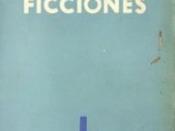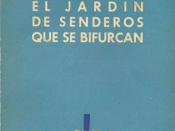Imagine, you turn left and left and left, and then go straight because you certainly don't want to go right. If you do, you'll surely get lost. You heard them say that if you continue to your left, you will find the middle. The middle just has to be right around the corner. It isn't. Is it possible that the first lefts you took were wrong? Hours later you emerge from the labyrinth wall. Are you on the other side or are you in the middle? Why can't you tell the difference? You're tired and don't want to turn back around. You're definitely in the middle, but it's much bigger than you thought it would be. It's much bigger and clearly only the beginning of something even larger. If this is the middle, why does it look exactly like the outside?
Jorge Borges manifests the idea that infinite choices repetitively lead to singular events in Ficciones, his collection of short stories about metaphorical labyrinths.
He describes how the decisions that bring our goals to closure affect fate. Inevitably, the path's end for each goal leads to a fresh set of choices. Life encompasses a series of these choices. We wind through its events as we aim toward our goals. If life were like a decision tree, the goals we set would form the trunk with multiple outcomes shooting out like nearly identical leaves. When a person sets a goal or makes an early decision about a course of action, each choice thereafter is influenced by that goal. Borges' characters weave through several series of places, times, opportunities and pages of books, exploring their options and deciding their fate. Some of Borges' decision labyrinths are familiar and have easily recognizable patterns, while others are infinitely complex and will never be completely...


